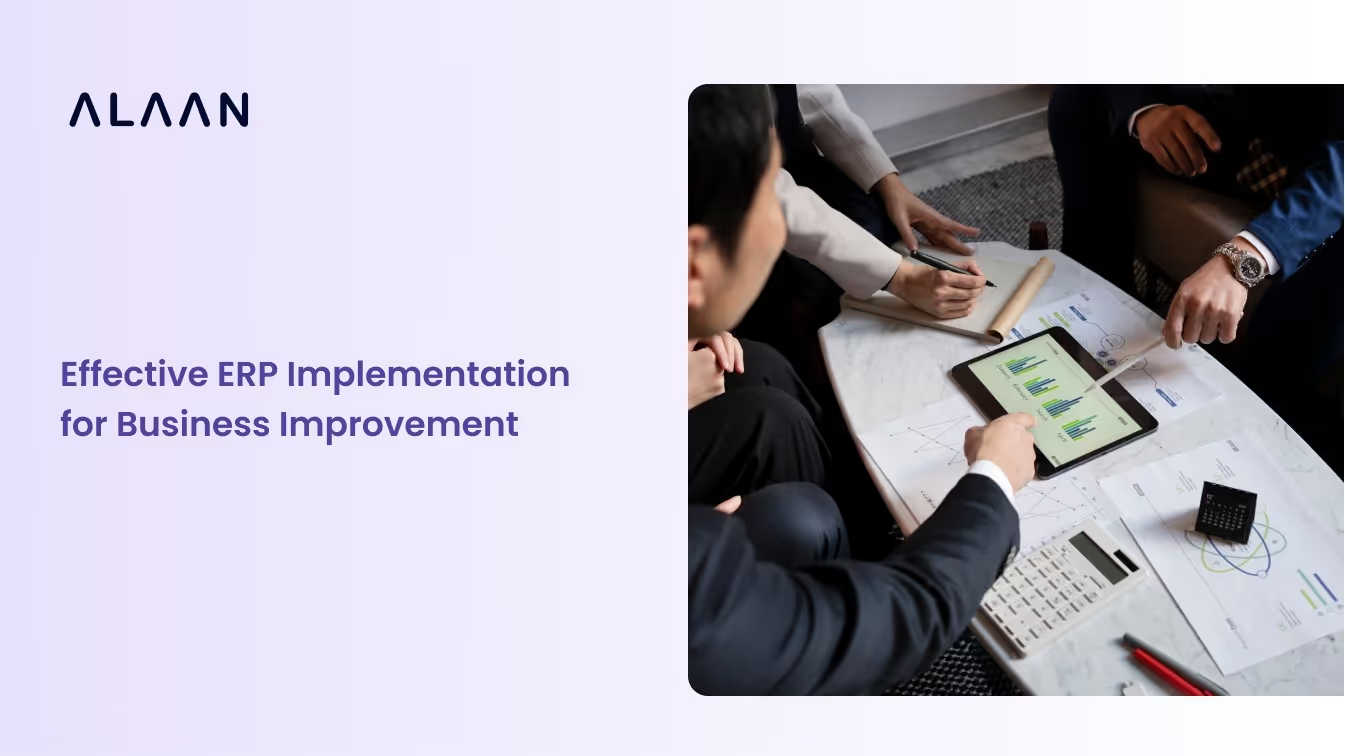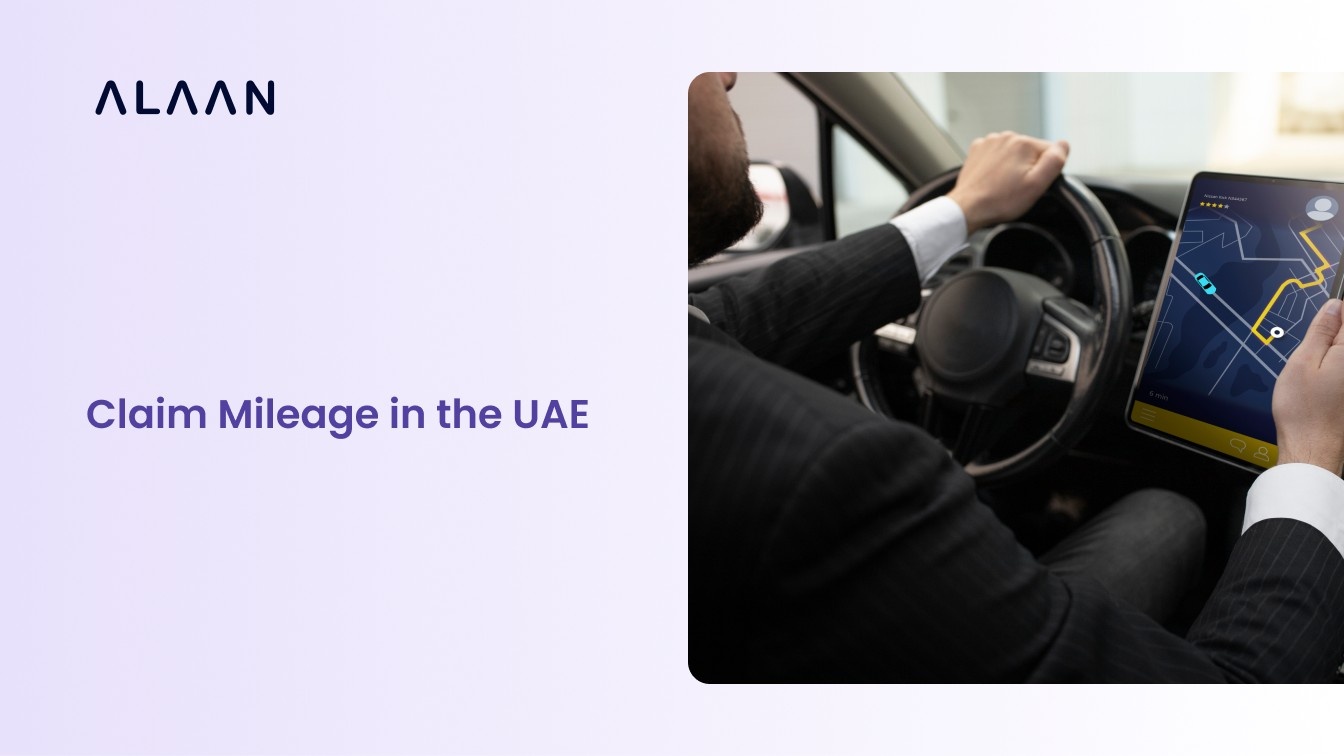ERP implementation is no longer optional for companies across the Middle East—it’s now a competitive necessity. As governments accelerate digital mandates and SMEs seek scalable operations, demand for modern ERP systems has surged. In the UAE alone, 50% of SMEs plan to adopt ERP to streamline workflows, comply with evolving tax regulations, and scale faster, according to IDC research.
With the MENA ERP software market projected to reach $1.7 billion by 2025 (Statista), the stakes for getting implementation right have never been higher. Yet, despite promising ROI—up to 83% of ERP projects meet or exceed expectations (Panorama Consulting)—implementation remains complex, especially in a region with diverse regulations and cultural dynamics.
This guide breaks down a region-specific approach to ERP implementation that's built for scale, compliance, and measurable performance improvement. From VAT automation to multi-entity support and KPI monitoring, we’ll cover strategies to help Middle East-based businesses implement ERP systems that deliver real ROI.
Key Takeaways
- ERP implementation is a strategic priority for Middle East enterprises seeking measurable efficiency, cost control, and regulatory compliance.
- The regional ERP market is experiencing rapid growth, driven by government mandates, digital economy initiatives, and the need for scalable business operations.
- Successful projects begin with clear objectives, robust change management, and stakeholder alignment to support transformation and ensure ROI.
- Localisation is essential, including Arabic language support, dual calendars, and built-in GCC tax logic.
- Effective ERP adoption leads to quantifiable performance gains: up to 30% reduction in operational costs, improved data accuracy, and accelerated decision-making.
What Is ERP Implementation—and Why It Matters
Enterprise Resource Planning (ERP) implementation refers to the methodical process of deploying, configuring, and integrating ERP software solutions across all functional departments within an organisation.
The intent is to centralise data management, standardise processes, and provide a real-time, unified platform for finance, operations, supply chain, HR, and customer management.
Effective ERP implementation follows a disciplined, multi-phase lifecycle, each stage critical to achieving measurable business improvement. Below is a detailed breakdown of the ERP implementation lifecycle:
After understanding the basics, let’s understand how it transforms a business, improves data accuracy, and supports smarter decisions.
Benefits of Effective ERP Implementation

A successful ERP implementation redefines business operations, providing Middle East companies with measurable and sustainable improvements across financial, operational, and compliance domains.
The proven benefits for regional organisations are outlined below.
- Enhanced Regulatory Compliance and Audit Readiness
Automated VAT calculations, built-in compliance reporting, and real-time data trails enable strict adherence to UAE FTA guidelines and Tax (GAZT) requirements. This reduces audit risk and streamlines statutory reporting across multiple jurisdictions, including free zones and mainland operations.
- Optimised Financial Management
Consolidation of financial data provides greater visibility over cash flow, accounts receivable/payable, and cost centres. Decision-makers benefit from automated reconciliation, faster closing cycles (often improved by 30–40%), and more accurate budgeting and forecasting.
- Operational Efficiency and Process Integration
Seamless coordination between procurement, inventory, supply chain, and sales functions minimises manual handoffs and error rates. MENA businesses experience a reduction in inventory carrying costs and a marked improvement in order cycle times post-implementation.
- Data-Driven Decision-Making
Centralised data and advanced analytics empower finance leaders to monitor key KPIs, profitability, working capital, and sector-specific metrics in real-time, enabling faster decision-making.
- Cost Reduction and Resource Optimisation
Automated workflows replace time-consuming manual tasks in HR, payroll, and procurement, resulting in labour cost savings and resource reallocation toward revenue-generating activities.
- Scalability and Business Agility
Cloud-based ERP solutions allow rapid adaptation to growth, new market entry, and regulatory changes, critical for companies expanding within the GCC or managing multi-jurisdictional entities.
- Improved Customer and Supplier Management
Integrated CRM and supplier management modules enhance customer experience, vendor reliability, and service levels, supporting long-term business relationships and competitiveness.
To fully capitalise on ERP’s advantages, businesses must adopt strategic and region-specific approaches customised to their regulatory frameworks and growth ambitions.
[cta-9]
Best ERP Implementation Strategies for Middle East Business Growth

To maximise the impact of ERP implementation, businesses must adopt targeted strategies that align with regional regulatory requirements and operational complexities.
These strategies focus on regulatory compliance, localisation, phased execution, and executive involvement to ensure measurable business improvements and sustainable growth. Specific adherence to VAT, corporate tax, and e-invoicing mandates, combined with continuous performance monitoring, is crucial for successful ERP-driven transformation in the MENA region.
The following actionable strategies ensure ERP implementation directly delivers real business improvements:
- Set Measurable, Regulatory-Driven Objectives:
Define goals with quantifiable targets, such as automating 100% of VAT filings in the UAE and achieving a 50% faster statutory close, benchmarked by a UAE conglomerate achieving this within six months post-implementation.
- Prioritise Localisation and Arabic Language Support:
Select ERP solutions that natively support Arabic, dual (Gregorian/Hijri) calendars, and GCC-specific VAT and zakat rules. In Saudi government tenders, platforms without Arabic financial disclosures have been disqualified from procurement processes.
- Integrate Automated Compliance Features:
Use modules for automatic tax calculation, KSA e-invoicing (ZATCA), and FTA returns. Dubai-based companies deploying dashboard alerts have cut late compliance fines by 60% through proactive deadline tracking.
- Deploy a Phased Rollout for Multi-Jurisdiction Operations:
For businesses in UAE free zones and mainland, implement ERP by legal entity and jurisdiction; one energy group began with KSA e-invoicing before extending the same system to UAE VAT compliance, minimising disruption and risk.
- Mandate Executive and Departmental Ownership:
Assign the CFO and department heads direct responsibility for ERP phases. In the Saudi industry, having project boards led by finance executives cut ERP implementation times by 25% and drove user adoption.
- Monitor Key Regional KPIs Post-Implementation:
Track metrics like VAT processing duration, reporting accuracy, and inventory turnover. MENA companies using ERP dashboards have achieved 35% faster management reporting and 28% fewer stockouts.
- Continuously Update for Regulatory Changes:
Schedule quarterly ERP reviews to integrate new mandates like UAE corporate tax and Saudi digital tax stamps, ensuring ongoing compliance and risk reduction.
Despite fast-growing ERP adoption in the Middle East, organisations regularly encounter challenges that limit seamless integration and optimal system use.
Common ERP Implementation Challenges in the Middle East (and How to Overcome Them)
Organisations in the Middle East often face real hurdles when implementing ERP systems because each country has different rules, existing technology, and ways of working. For example, adapting a new ERP system is tough when employees prefer familiar routines, or when software isn’t set up for local languages and regulations.
If challenges like these aren’t tackled head-on with clear training, tailored solutions, and strong project planning, the company may not see the full benefits of its ERP investment, or it may experience delays and extra costs.
Below are the main ERP implementation challenges in the Middle East, each paired with actionable, region-specific solutions:
- Cultural and Regulatory Diversity:
- Challenge: Differing tax laws, business practices, and cultural attitudes across GCC countries complicate process standardisation and compliance.
- Solution: Use localised ERP templates with built-in compliance for each jurisdiction. Conduct bilingual (Arabic/English) and culturally sensitive user training to bridge local adaptation gaps.
- User Resistance and Misalignment with Company Culture:
- Challenge: High reluctance among staff to change; up to 60% of ERP delays are tied to users' unwillingness to adapt to new processes or workflows.
- Solution: Engage change management early. Involve key staff in process mapping, offer hands-on training, and maintain an open feedback loop throughout implementation.
- Integration with Legacy Systems:
- Challenge: Legacy systems make data migration complex, causing prolonged timelines and information silos.
- Solution: Employ phased data migration and specialist middleware for interoperability. Run parallel systems with staged switchover to contain risk.
- Cybersecurity and Data Protection:
- Challenge: Increased regional cyber threats expose ERP data to significant risk, particularly amid geopolitical tensions.
- Solution: Enforce advanced cyber protocols (multi-factor authentication, encryption, continuous monitoring) and ensure partners comply with data privacy regulations.
- Scope Creep and Project Overruns:
- Challenge: Uncontrolled changes and lack of scope discipline can derail timelines and inflate costs.
- Solution: Set up strict change management governance, clear escalation paths for scope changes, and regular project reviews with executive oversight.
- Skills and Training Gaps:
- Challenge: Lack of local ERP expertise and inconsistent end-user training causes poor system utilisation and low ROI.
- Solution: Invest in ongoing training, partner with ERP vendors with regional experience, and appoint internal “super-users” for knowledge transfer and support.
- Technical Resource Constraints:
- Challenge: Limited infrastructure (e.g., internet connectivity, on-site IT) in some sectors hinders deployment and daily usage.
- Solution: Opt for a cloud or hybrid ERP with localised data centres, and provide offline access solutions or local caching for unreliable connections.
Also Read - UAE’s Corporate Tax: A primer on navigating the new regulations
After exploring the challenges, it’s crucial for organisations to optimise the broader integration process using proven, region-specific tactics.
ERP Integration Best Practices for Seamless Deployment and Compliance

Successful ERP integration ensures seamless data flow. However, with increasing government mandates for real-time compliance and digital transformation programs, businesses must adopt scalable, cloud-based ERP solutions that connect finance, HR, and supply chain systems for a unified source of truth.
Here are some best practices to ensure seamless data flow, reduce errors, and maximise the benefits of connected systems.
- Begin With a Detailed Regulatory and Gap Assessment:
Map every statutory requirement, like UAE VAT, Saudi ZATCA e-invoicing, and labour laws, against your current processes before integrating the ERP. Dubai-based manufacturers doing pre-integration regulatory mapping have reduced project rework by 35% due to early compliance alignment.
- Define a Single Source of Truth for Master Data:
Select a lead system (finance, HR, or operations) and standardise master data (customers, suppliers, item codes) before integration. Saudi conglomerates using a central master data authority prevent duplicate records and achieve complete consistency in statutory reporting.
- Use Pre-Built Connectors and Regional APIs:
Opt for ERP and local platform integrations like Alaan that use official, vendor-maintained connectors, drastically reducing custom coding, integration errors, and disconnects. MENA finance teams using certified integrations report up to twice the speed of initial setup and lower maintenance costs.
- Monitor Key Integration KPIs Upfront:
Track reconciliation accuracy, tax reporting timelines, error rate per transaction sync, and data latency. Oilfield services firms in KSA using KPI dashboards detected and resolved discrepancies 70% faster post-integration.
Many businesses are now seeking solutions that deliver automation, real-time visibility, and built-in compliance from the ground up. Alaan's spend management platform has emerged as a specialist tool that bridges these ERP gaps.
[cta-5]
How Alaan Supports Seamless ERP Implementation in the Middle East
Alaan streamlines ERP implementation for Middle East businesses by eliminating manual bottlenecks and embedding compliance and control into everyday financial operations. By bridging your ERP system with real-time expense controls, Alaan gives you full visibility from swipe to reconciliation, without the manual follow-up.
Key benefits include:
- Built-In UAE VAT Compliance: Every transaction records VAT info, TRN, and supplier details, ensuring businesses stay audit-ready and fully compliant with local tax laws, critical for UAE and GCC operations.
- Smart Corporate Cards With Embedded Controls: Issue unlimited physical and virtual cards with department-specific spend limits, merchant locks, and category-level restrictions. Set automated approval flows to reduce policy breaches before they occur — directly syncing with your ERP’s expense modules.
- Unified Oversight Across Entities/Currencies: Alaan supports multiple entities and currencies (AED, USD, SAR), providing consolidated spend visibility and policy enforcement across complex regional operations.
- Automated Reporting & Analytics: Real-time dashboards allow teams to track expenses by department or project, spot overspending instantly, and make informed decisions without waiting for end-of-month reports.
- ERP Integration Without Disruption: Alaan integrates with leading ERP platforms like Microsoft Dynamics, Oracle NetSuite, SAP, Xero, and QuickBooks. Implementation teams based in the UAE ensure region-specific ERP mapping, VAT tagging, and approval workflow alignment, minimising downtime and manual overhead.
Many Alaan customers in the GCC have cut ERP-related expense reconciliation time by 70%, while increasing policy compliance and VAT reporting accuracy in the first three months post-integration.
Conclusion
ERP implementation is not just about deploying a software solution; it’s about aligning technology with your business strategy, compliance obligations, and regional context. For Middle East companies, this means ensuring support for Arabic, handling multi-entity reporting, and embedding tax compliance (VAT, zakat, e-invoicing) directly into your financial workflows.
With a clear plan, localised configuration, and the right integrations, businesses can see tangible ROI: faster reporting, reduced operational costs, and scalable growth. At Alaan, we simplify ERP rollouts by embedding smart expense controls, automating compliance, and giving you real-time visibility — from the first swipe to final reconciliation. Our local team works closely with yours to ensure your ERP is seamlessly connected, future-proofed, and tailored for scalable growth.
Book a demo with Alaan to see how we integrate seamlessly with your ERP and help you build a future-ready finance function — one that scales with your business.
FAQs
1. How is cloud ERP adoption evolving among SMEs in the Middle East?
Cloud-based ERP adoption is rapidly increasing among SMEs in the region due to lower upfront costs and easier scalability. This shift enables small and medium businesses to deploy ERP faster without heavy IT infrastructure investments, supporting growth and digital transformation initiatives.
2. What role does ERP customisation play in UAE businesses?
Over 50% of UAE companies prefer customised ERP solutions tailored to their specific industry needs, such as contract management or asset tracking. Customised ERP helps increase operational efficiency by up to 35% and reduces errors by around 25%, proving critical in the UAE’s diverse business landscape.
3. Which industries in the Middle East are leading ERP adoption, and why?
Manufacturing, retail, logistics, oil & gas, and construction sectors are at the forefront of ERP adoption. These industries require integrated supply chain visibility, regulatory compliance, and operational efficiency to remain competitive amid regional economic diversification efforts.
4. How do geopolitical factors impact ERP security strategies in the Middle East?
Heightened geopolitical risks increase cyber threat levels, prompting organisations to prioritise ERP cybersecurity with multi-layered defences, continuous monitoring, and compliance with regional data protection laws to safeguard sensitive financial and operational information.
5. What are common ERP pricing and delivery trends in the Middle East market?
The ERP market is seeing a shift towards flexible pricing models and hybrid deployment (combining cloud and on-premises) to address varying business needs. Vendors increasingly offer vertical-specific solutions and scalable packages to meet the diverse demands of Middle Eastern enterprises.


.avif)







